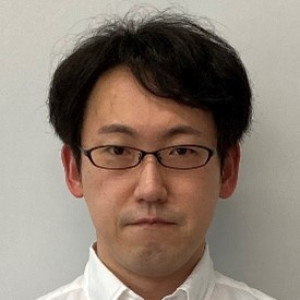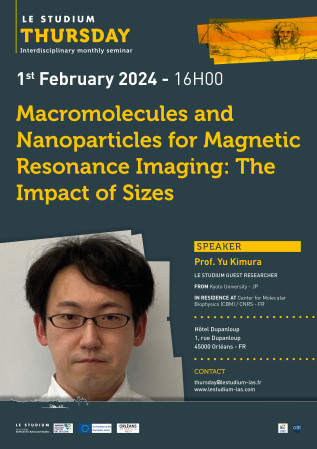Yu Kimura

From
In residence at
Center for Molecular Biophysics (CBM) / CNRS - FR
Host scientist
Eva Jakab Toth
BIOGRAPHY
Yu Kimura obtained his PhD in polymer chemistry from Kyoto University, Japan in 2009 on the development of tissue regeneration scaffolds with controlled release of bioactive molecules. After a postdoctoral experience in Tsukuba, Japan and program-specific employment in Kyoto University, he is currently an Associate Professor of Department of Energy and Hydrocarbon Chemistry, Graduate School of Engineering, Kyoto University. His specialty is biomaterial science, and the specific expertise at present is in contrast agent synthesis for magnetic resonance imaging (MRI), fluorescence imaging and photoacoustic imaging (PAI). His current research interests are the imaging of various tumors and oxygenation status of tissues and their treatment through theranostics, with the related background in organic/inorganic/polymer chemistry and multidisciplinary knowledge in the fields of pharmacokinetics, regenerative medicine, nanoscience, and supramolecular science.
PROJECT
Nanoparticle contrast agents: synthesis and characterization
MRI is a modality to visualize the amount and state of protons in the body by utilizing the nuclear magnetic resonance (NMR) of water and fat protons and is known as a minimally invasive and safe method with excellent spatial resolution. However, there is still a problem with sensitivity, enhancement of image contrast is often required by administering paramagnetic chelates such as gadolinium (Gd)–DTPA (diethylenetriaminepentaacetic acid) or Gd–HP–DO3A (10-((2R)-2-Hydroxypropyl)-1,4,7,10-tetraazacyclododecane 1,4,7- triacetic acid). Gadolinium (Gd), has seven unpaired electrons in the 4f orbital, it has the largest magnetic moment in the periodic table, and has the effect of shortening the longitudinal relaxation time of protons’ magnetization. Then, it is known as a highly “positive contrast agent.” On the other hand, because Gd3+ ions are toxic, chelate-type MRI contrast agents as above are widely used in clinics. And recently nanoparticulate gadolinium materials have been focused with higher contrast enhancing ability. In this context, this project aims to clarify the proton relaxation mechanism of novel nanoparticulate Gd contrast agents through Nuclear Magnetic Relaxation Dispersion (NMRD) study, an expertise that the host group possesses. Through the collaboration, we can measure the effect of shortening the proton relaxation time for various gadolinium oxide nanoparticles with different particle sizes, by using the NMR relaxometer. The findings will enable us to elucidate the precise mechanism of proton relaxation of our novel Gd contrast agents, and to develop novel, innovative, more efficient, and safer Gd-MRI contrast agents. The obtained results open the possibility to use these systems for in vivo MRI contrast imaging at the cellular or tissue level, thanks to the important sensitivity improvement and optimization of the nanoparticulate Gd-based contrast agents based on the results of this research.

